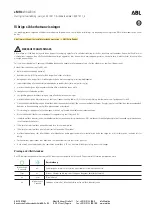
INTRODUCTION
PRELIMINAR STUDIES AND CONSIDERATIONS
MAINTENANCE AND DAMAGE PREVENTION
WORK ON BASIC VEHICLE
MOUNTING AND CONSTRUCTION
POWER TAKE-OFF
ELECTRIC AND ELECTRONIC SYSTEMS
APPENDIX
148
Body Builder Manual Part II, Specific Book LCV
V1.0, February 2015
5.2.3
Subframe: permissible sections
To ensure good resistance and flexibility, and to adapt the subframe in the best way
possible to the movements of the chassis frame, HMC recommends using opened
profiles such as U-sections, whether standard or obtained by folding a plate, or any
other open section for the construction of the subframe (never use laminated
beams). An open profile allows flexion without subjecting the structure to unneces
-
sary tensions.
Subframe longitudinal beams
The dimensions of the subframe longitudinal beams are determined according to the
resistant moment or section modulus (W
x
) required to withstand the stresses to
which it will be subjected. When several structures are mounted on the chassis
frame, the moment of greatest resistance between them will be taken as the basis
for calculating the dimensions and features of the subframe.
Ideally, it is preferable to have a subframe and a chassis frame with the same flange
width. HMC recommends using profiles with U-sections to build the longitudinal
beams of the subframe. Sometimes longitudinal beams that deviate from the
standard dimensions are required, due to the loads on the body, or simply because
it is necessary for the operation of the vehicle. In these cases, different types of
sections can be used to build the subframe, in order to improve its strength and ri
-
gidity. They can be used for the entire beam or just in cases where it is needed.
See chapter 5.2.4 "Subframe design requirements".
Table 1-101 LCV_SPBTC52_002 Recommended subframe longitudinal beams sections
SECTION TYPE
DESIGN
DESCRIPTION
S1
S2
S3
















































